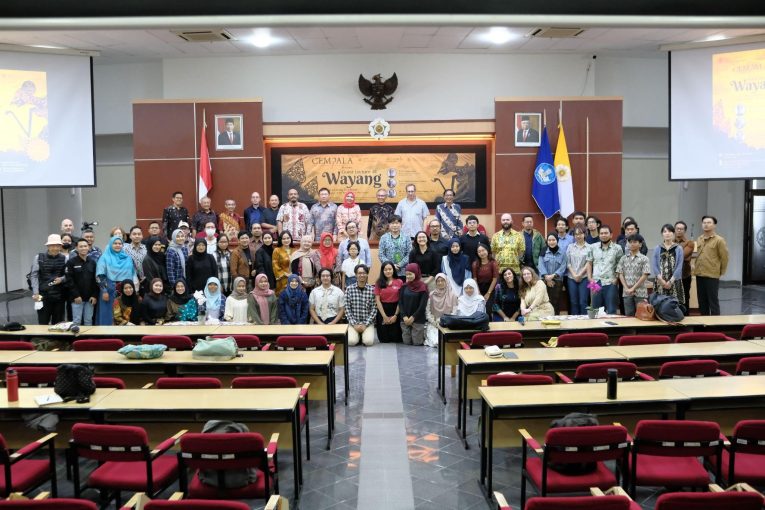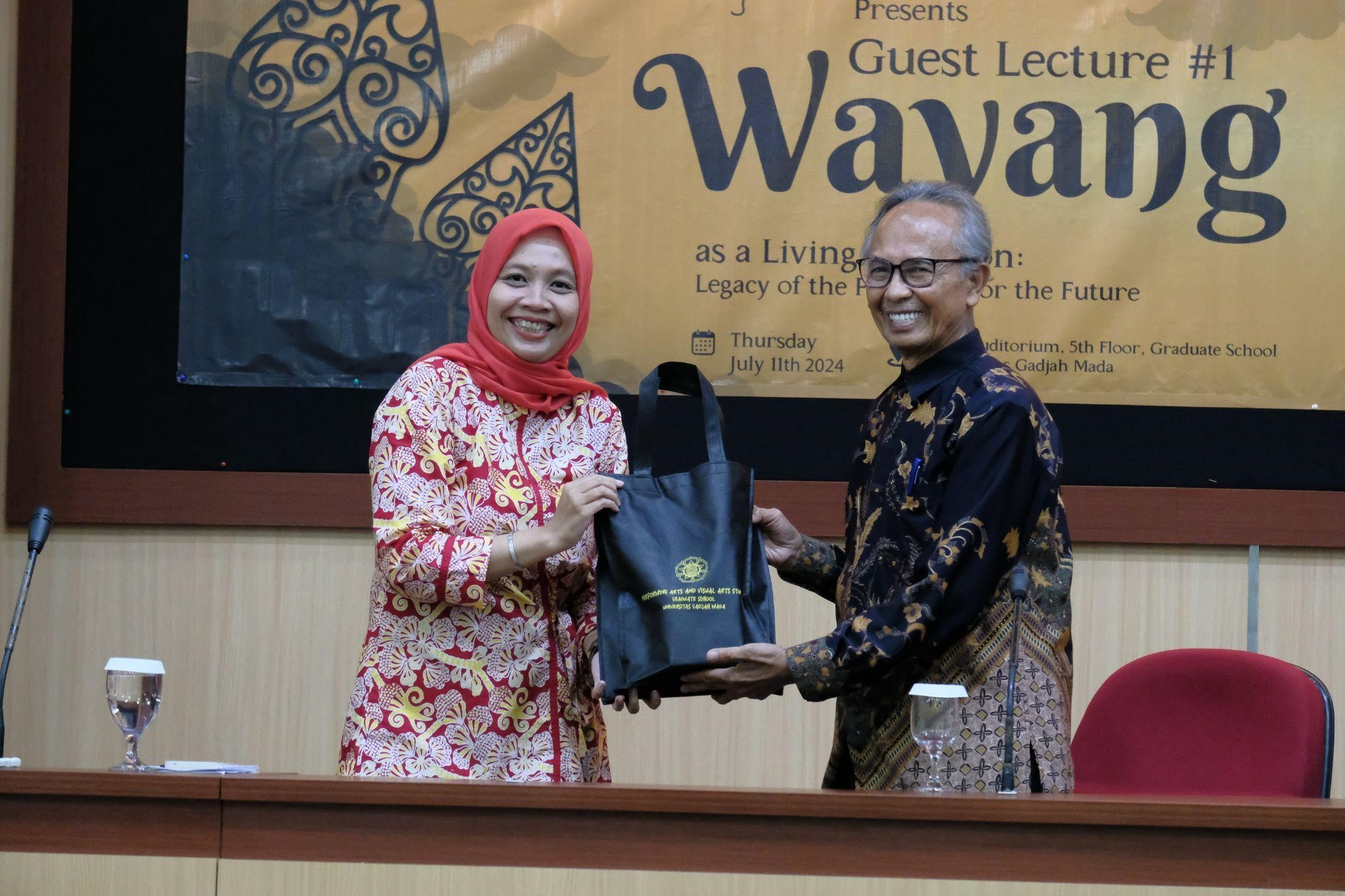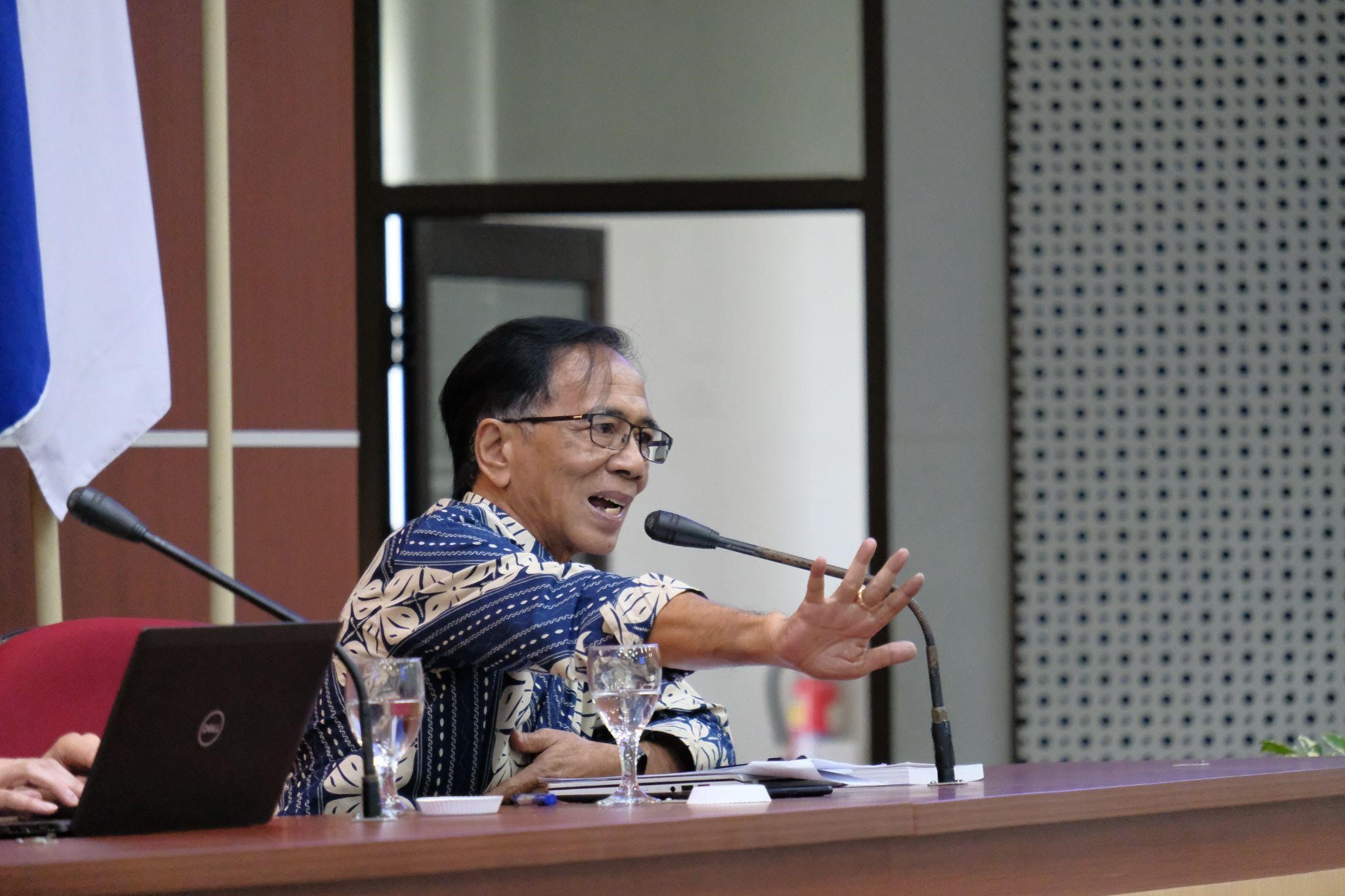
On Thursday, July 11th, the Performing Arts and Visual Arts Studies Program (PSPSR), Graduate School at Universitas Gadjah Mada (UGM), organized a guest lecture entitled “Wayang as Living Tradition: Legacy of the Past, Gift for the Future”. This event was held through a collaboration between PSPSR, Cempala (Center Multidisciplinary Puppetry Arts Learning and Appreciation), Ullen Sentalu, and the Wayang Philosophy Study Center, Faculty of Philosophy UGM.
Through the global partnerships established by PSPSR, the event featured distinguished speakers including Prof. Sumarsam from Wesleyan University, Prof. Matthew Isaac Cohen from the University of Connecticut, and Dr. G.R. Lono L. Simatupang, M.A., a lecturer at PSPSR. The event was attended by PSPSR students and art community members in Yogyakarta to explore the cultural diversity inherent in the traditional art of Wayang.
The event was opened with remarks from Dr. Budi Irawanto, M.A., Chair of the PSPSR Doctoral Program. He expressed, “PSPSR is delighted to collaborate with various parties to make this event possible. Since November 2003, Wayang has been recognized by UNESCO as a heritage of humanity. The development of Wayang has been remarkable, with numerous innovations and transformations, hence today’s theme is very fitting, ‘Wayang as a living tradition‘’,” said Budi.
Mr. Daniel Hariono from Cempala highlighted in his address that Wayang is not only a cultural artifact but also an icon for diplomacy. He emphasized that the speakers of the day would provide diverse perspectives on Wayang. Prof. Sumarsam, as the first speaker, shared his ethnographic journey meeting various figures and discovering highly inspirational artifacts for his books. Prof. Matthew Isaac Cohen, a theater and performance anthropologist, discussed how Wayang narratives can be interpreted from various perspectives and contextualized with current conditions to make them relevant.
Dr. Lono Simatupang presented a different perspective on the materialization of Wayang in the context of technological shifts and discussed the aesthetic implications and opportunities arising from these changes. The collaboration among the organizers is seen as a step towards preserving the traditional art of Wayang. Through an educational lens, it is emphasized that Wayang must be recognized, celebrated as a legacy of the past, and passed down to future generations.
Keywords: global partnership, cultural diversity, education, SDG 4: Quality Education, SDG 17: Partnerships for the Goals, SDGs
Author: Asti Rahmaningrum



